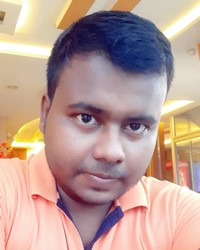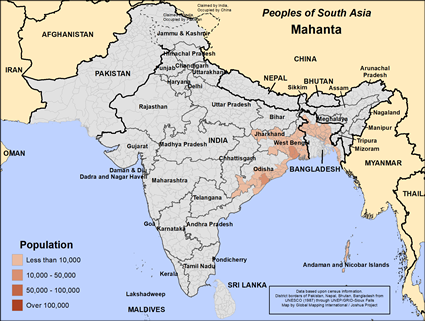Mahanta in India

Photo Source:
Anonymous
|

Map Source:
People Group data: Omid. Map geography: UNESCO / GMI. Map Design: Joshua Project.
|
| People Name: | Mahanta |
| Country: | India |
| 10/40 Window: | Yes |
| Population: | 93,000 |
| World Population: | 94,900 |
| Primary Language: | Bengali |
| Primary Religion: | Hinduism |
| Christian Adherents: | 0.00 % |
| Evangelicals: | 0.00 % |
| Scripture: | Complete Bible |
| Ministry Resources: | Yes |
| Jesus Film: | Yes |
| Audio Recordings: | Yes |
| People Cluster: | South Asia Hindu - other |
| Affinity Bloc: | South Asian Peoples |
| Progress Level: |
|
Introduction
A Mahanta can be the keeper or guardian for a holy site for Hindus or Sikhs. The Mahanta are members of the Kshatriya caste, the second highest caste of Hinduism. The Kshatriya are descendants of rulers, large landowners, military officers and royal officials. Today the Mahanta are employed in a great variety of professions. Those who are educated serve as physicians, politicians, government administrators, businesspeople and entertainers. Less educated Mahanta labor in the fields and work in factories. The Mahanta marry within their caste, as elders arrange these marriages. The bride often goes to live with the groom's family when she reaches puberty. Child marriages are becoming less common than they were in the past.
Ministry Obstacles
Hindu peoples with high status are very reluctant to accept Christ for several reasons. They would be expected to associate with existing Christians, who are usually from a modest background. It can easily mean they lose their high status.
Outreach Ideas
Pray for the Followers of Christ
Pray for the Entire People Group
There are many gospel materials in their primary languages. Pray for these to become easily available.
Pray for a movement of Mahanta households to study the Bible and accept the blessings of Christ.
Pray for the Mahanta to understand and embrace Jesus who wants to bless their families and neighborhoods.
Pray for teams of believers to commit towards sustained, focused prayer for the Lord to open the hearts of Mahanta family leaders.